FOURTH GENERATION: Contemporary Modern Dance
During the mid 1970s there was a shift back to more technical-based movements with a return to the proscenium stage. We are using the term Contemporary Modern to refer to this current genre.
Remember that the term Modern refers to those early choreographers who broke away from old world ballet and developed an original abstract modern point of view. After a while these early modern choreographers codified their technique styles. At this time, modern refers to any of the choreographers who studied with or were influenced by the first- or second-generation modern dancers and are now codifying their own technique. Postmodern dance broke away from modern technique and used pedestrian movement (everyday gestures or actions such as walking, sitting, opening a door).
Contemporary Dance is an expansive term meaning current, what’s happening now. It is a broader, more individualistic, expressive style of dance.
Contextual Connections
Dance Magazine’s Victoria Looseleaf helps to define the difference between Contemporary and Modern Dance.
“Perhaps modern and contemporary genres have taken on new meanings because the global village has created a melting pot of moves, a stew of blurred forms that not only break down conventions and challenge definitions, but, in the process, create something wholly new, but as yet unnamed.”
Looseleaf went on to speak with several dance professionals about their thoughts on the topic.
Contextual Connections
Mia Michaels, Choreographer for So You Think You Can Dance and various pop stars and dance companies, Los Angeles
“I’m a little responsible for So You Think You Can Dance co-opting the term ‘contemporary.’ When we first started the show, Nigel [Lythgoe] was calling it lyrical. I said, ‘It’s not lyrical, it’s contemporary.’ We’ve created a monster. Contemporary is an easy way out—it’s when you don’t know what to call it, you call it contemporary. I feel like dance is fusing all the forms and that the uniqueness of each genre is starting to be muddled. It feels regurgitated and I want it to change desperately. I’m wanting to see where these new legends and voices—like Fosse, Robbins, Graham—are going to pop up.”
Jennifer Archibald, Founder/Director, Arch Dance, New York City
“Contemporary is a collection of methods that have been developed from modern and postmodern dance. It’s also a cycle of shedding techniques we’ve learned in favor of personal expression of movement. Where modern dance moved against the grain of ballet, contemporary moves against the grain of classical modern techniques.
“Contemporary is not a technique, it’s a genre associated with a philosophy and exploration of different natural energies and emotions. There’s a physicality that’s appealing today, but there’s a spirituality of the contemporary movement that has been lost with the new generation in this free-for-all of different methods.”
Twyla Tharp
Twyla Tharp trained with the American Ballet Theatre, modern dance artists Martha Graham and Merce Cunningham, and Luigi and Matt Mattox jazz dance educators. Tharp began choreographing dances that blend dance genres, such as modern dance, jazz, tap, and ballet. Tharp has choreographed “more than one hundred sixty works: one hundred twenty-nine dances, twelve television specials, six Hollywood movies, four full-length ballets, four Broadway shows and two figure skating routines. She received one Tony Award, two Emmy Awards, nineteen honorary doctorates, the Vietnam Veterans of America President’s Award, the 2004 National Medal of the Arts, the 2008 Jerome Robbins Prize, and a 2008 Kennedy Center Honor.” Bio | twyla tharp. (n.d.). Retrieved April 27, 2022, from https://www.twylatharp.org/bio
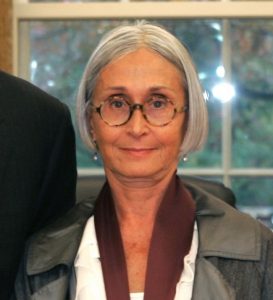
Watch This
Tharp’s Deuce Coup, danced to music by The Beach Boys and considered the first crossover between ballet and modern dance.
Twyla Tharp’s Famous ‘Eight Jelly Roll’ Dance from Twyla Moves, American Masters, PBS
Garth Fagan
Garth Fagan developed the “Fagan Technique,” blending modern dance, Afro-Caribbean dance, and ballet. He received his training from Limón, Ailey, and Graham. Fagan has created works for notable companies like Alvin Ailey American Dance Theater and New York City Ballet.
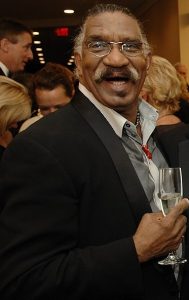
Watch This
Fagan’s From Before, performed by the Alvin Ailey Dance Company.
Contextual Connections
Disney’s The Lion King
Fagan is perhaps best known for his legendary work on Disney’s Broadway musical The Lion King (1997) in which he brought the animals to life by combining clever costume pieces with dance evocative of the animals in the story. In this video you will get a glimpse of the man and his choreography.
Pilobolus
Pilobolus is a dance collective created in the late 1970s by Dartmouth college-student athletes Robby Barnett, Martha Clarke, Lee Harris, Moses Pendleton, Michael Tracey, and Jonathan Wolken, with the guidance of their teacher Alison Chase. Pilobolus branched from a choreography class experimenting with gymnastics and improvisation to create images by sculpting bodies.
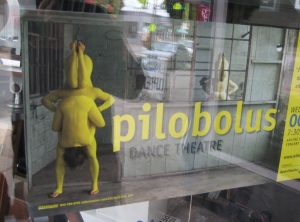
Watch This
Pilobolus perform Shadowland.
Mark Morris
In the early years of his career, Mark Morris performed with the companies of Lar Lubovitch, Hannah Kahn, Laura Dean, Eliot Feld, and the Koleda Balkan Dance Ensemble. The Mark Morris Dance Group was formed in 1980 when he was just 24. Since then Morris has created over 150 works for the company. In 1990, he founded the White Oak Dance Project with Mikhail Baryshnikov.

Watch This
Reporter Jeffrey Brown talks to the famed choreographer on his production of “L’Allegro” on PBS’ Great Performances.
Bill T. Jones
Bill T. Jones is known for blending controversial subjects into his modern dance choreography. Bill T. Jones and his life partner, Arnie Zane, founded the Bill. T. Jones/Arnie Zane Company in the early 1980s. Their creative works explored LGBTQIA+ themes of identity and racial tensions. Following the death of Zane, who succumbed to AIDS, Jones continued their work with the company. Bill T. Jones uses his platform as socio-political activism using dance, autobiographical elements with narrative, and theatrical components.
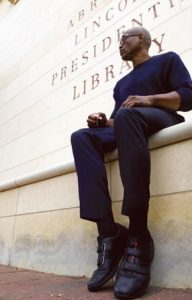
Watch This
An excerpt from D-Man in the Waters performed by the Alvin Ailey American Dance Theater. D-Man in the Waters is a political response to the AIDS epidemic honoring those who have succumbed to the disease.
His piece What Problem? in which Bill T. Jones explores current events and questions racism, equality, brutality, and change.
Jawole Willa Jo Zollar
In the early 1980s, Jawole Willa Jo Zollar founded Urban Bush Women. Her training began with the Dunham technique and studying various African diaspora dance forms. Urban Bush Women started as an all-women group and predominantly centered their work from women’s perspectives; however, the company has included male dancers. The mission of Urban Bush Women is to raise the voices of people of color to advocate for social change addressing issues of race and gender inequalities. Jawole Willa Jo Zollar blends personal testimonies from the company members to create narratives (text) combined with African and contemporary dance forms.

Watch This
“Hair and Other Stories,” exploring body image, gender identity, and race through conversations about hair care.
Lorenzo “Rennie” Harris
Lorezno “Rennie” Harris brings Hip-Hop to the concert stage, often telling stories of the human condition. In 1992, Harris founded his company, Puremovement, located in Philadelphia, in an effort to preserve hip-hop culture. Harris has choreographed contemporary dance works for modern companies, like the Alvin Ailey American Dance Theatre. His works will be further discussed in Chapter 7.

Watch This
The Alvin Ailey American Dance Theatre perform an excerpt from Harris’ Exodus.
Robert Battle
Robert Battle is the current Artistic Director of the Alvin Ailey American Dance Theater. He was a choreographer for the Ailey company. A graduate of Juilliard, he joined the Parsons Dance Company and founded his own company, Battleworks Dance. Battle has received numerous prestigious awards, such as being honored in 2005 by the Kennedy Center for the Performing Arts as one of the “Masters of African-American Choreography.”

Watch This
Takademe choreographed in 1999.
Sean Dorsey
Sean Dorsey is a transgender and queer choreographer. Dorsey founded the Sean Dorsey Dance Company based in San Francisco, centering his work on LGBTQIA+ themes. In 2002, Dorsey established Fresh Meat Production, a non-profit organization that advocates for equity in gender-nonconforming communities through commissions of new dances and community engagement programs.
Watch This
An excerpt of Boys in Trouble, a social commentary on the rigid ideas of gender and masculinity.
AXIS Dance
In the late 1980s, AXIS Dance was co-founded by Thais Mazur, Bonnie Lewkowicz, and Judith Smith. AXIS dance is one of the first dance companies to create inclusive spaces for dancers of all physical abilities. Through collaborative efforts, the company developed dance known as physically integrated dance, which aims to broaden the idea of dance and who a dancer is through movement that respects a “wide spectrum of physical attributes and disabilities” (Axis dance company. (2022). In Wikipedia. https://en.wikipedia.org/w/index.php?title=AXIS_Dance_Company&oldid=1074988620).
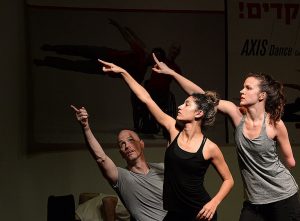
Watch This
AXIS Dance’s rehearsal process, featuring commentary by Artistic Director Marc Brew.
Camille A. Brown
Camille A. Brown blends African dance, social dances with vernacular jazz dance forms. In 2006, she founded Camille A. Brown & Dancers with choreographic works speaking to issues of race, culture, and identity. Brown’s creative works have been commissioned for renowned companies such as the Alvin Ailey Dance Theater.
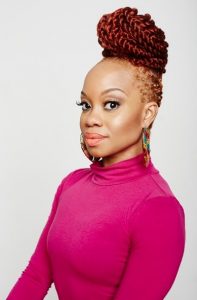
Watch This
New Second Line, inspired by the events of Hurricane Katrina in 2005. A celebration of the culture of New Orleans and the perseverance of Black people in the midst of devastation.
Victor Quijada
Victor Quijada is a Mexican-American contemporary choreographer from Los Angeles, CA. He began as a B-Boy and further expanded his dance background as a student at the Los Angeles County High School for the Arts, where he was introduced to modern dance and ballet. In 2002, Victor Quijada founded RUBBERBAND blending Hip-Hop ideology with various dance forms and theatrical elements.

Watch This
Victor Quijada is a Mexican-American contemporary choreographer from Los Angeles, CA. He began as a B-Boy and further expanded his dance background as a student at the Los Angeles County High School for the Arts, where he was introduced to modern dance and ballet. In 2002, Victor Quijada founded RUBBERBAND blending Hip-Hop ideology with various dance forms and theatrical elements.
Louisiana Connection
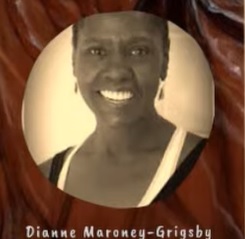
Dianne Maroney-Grigsby performed with the Alvin Ailey American Dance Theater for several years. She also served as the company’s assistant artistic director and taught full-time at the Alvin Ailey American Dance Center. Maroney-Grigsby later took the position of Artistic Director of Grambling State University’s Orchesis Dance Company. During her career, she has taught at Louisiana Dance Foundation’s Summer Dance Festivals, where she has choreographed for their resident dance company, Louisiana Dance Theatre (LDT). Some of her most noted works include “I Won’t Let Go of My Faith” and “World Hunger.”
Contextual Connections
Other Notable Contemporary Modern Artists
- Dallas Black Theatre, based in Texas, was founded in 1976 by Ann Williams dedicated to producing contemporary modern dance works that use a blend of modern, ballet, and jazz dance styles.
- Dayton Contemporary Dance Company, based in Utah, was founded in 1968 with the intent to raise more opportunities for people of color, with dances speaking to the African American experience.
- Cleo Parker Robinson Dance, located in Colorado, is considered a cultural ambassador for their work speaking to social injustices rooted in the African Diaspora.
- Doug Varone and Dancers was founded in 1986 and is based in New York, with choreographic works that are musically driven.
- Stephen Petronio Company was founded in 1984 and is located in New York. The company aims to preserve the postmodern dance lineage.
- Ohad Naharin is the artistic director of the Israeli Batsheva Dance Company and creator of Gaga, a movement language responding to one’s internal sensations.
- Shen Wei is a Chinese-American choreographer and founder of Shen Wei Dance Arts, a company using Western and Asian aesthetics, including dance, multimedia, and art.
- Akram Khan is an English choreographer that blends contemporary dance with Kathak, a traditional Indian dance.
- Crystal Pite founded Kidd Pivot in 2002, intertwining contemporary dance and storytelling with theatrical elements.
- Kyle Abraham founded his company in 2006, called A.I.M, by Kyle Abraham (formally known as Abraham.In.Motion), blending ballet with other dance forms, like modern dance and hip-hop, to speak to the human condition.
- Mia Michaels is primarily known for her choreography featured on So You Think You Can Dance. In 1997, Michaels founded the company RAW (Reality at Work), choreographing contemporary and jazz dance styles.
